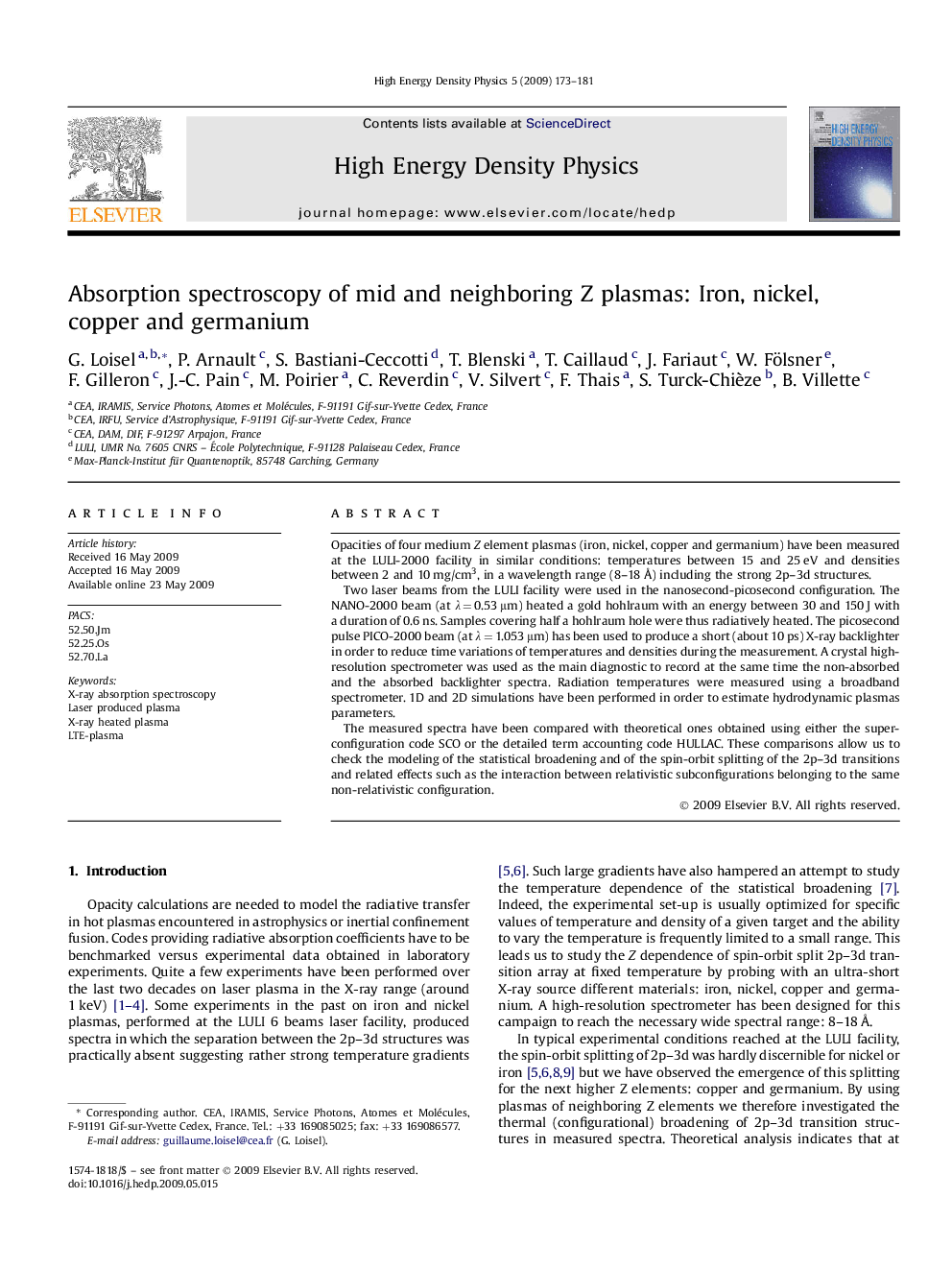| Article ID | Journal | Published Year | Pages | File Type |
|---|---|---|---|---|
| 1772805 | High Energy Density Physics | 2009 | 9 Pages |
Opacities of four medium Z element plasmas (iron, nickel, copper and germanium) have been measured at the LULI-2000 facility in similar conditions: temperatures between 15 and 25 eV and densities between 2 and 10 mg/cm3, in a wavelength range (8–18 Å) including the strong 2p–3d structures.Two laser beams from the LULI facility were used in the nanosecond-picosecond configuration. The NANO-2000 beam (at λ = 0.53 μm) heated a gold hohlraum with an energy between 30 and 150 J with a duration of 0.6 ns. Samples covering half a hohlraum hole were thus radiatively heated. The picosecond pulse PICO-2000 beam (at λ = 1.053 μm) has been used to produce a short (about 10 ps) X-ray backlighter in order to reduce time variations of temperatures and densities during the measurement. A crystal high-resolution spectrometer was used as the main diagnostic to record at the same time the non-absorbed and the absorbed backlighter spectra. Radiation temperatures were measured using a broadband spectrometer. 1D and 2D simulations have been performed in order to estimate hydrodynamic plasmas parameters.The measured spectra have been compared with theoretical ones obtained using either the superconfiguration code SCO or the detailed term accounting code HULLAC. These comparisons allow us to check the modeling of the statistical broadening and of the spin-orbit splitting of the 2p–3d transitions and related effects such as the interaction between relativistic subconfigurations belonging to the same non-relativistic configuration.
